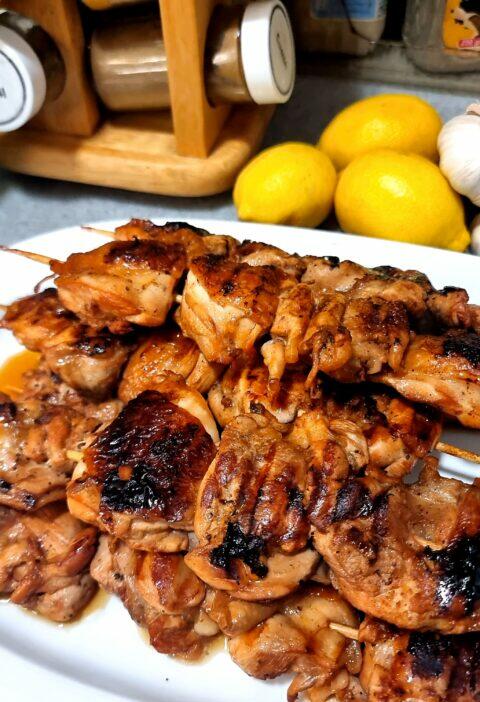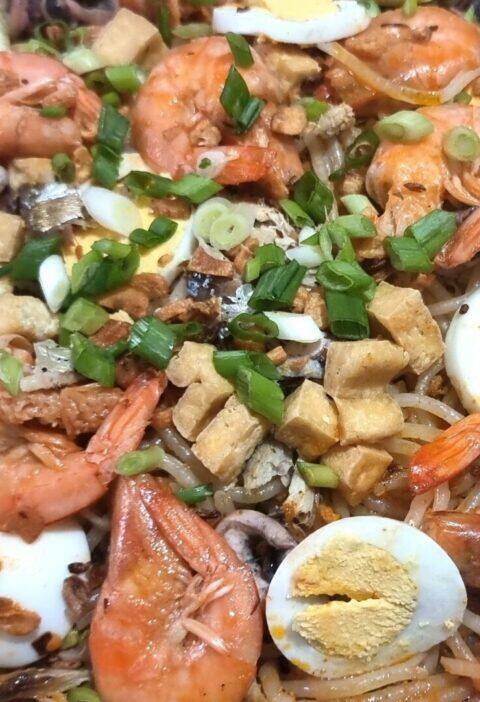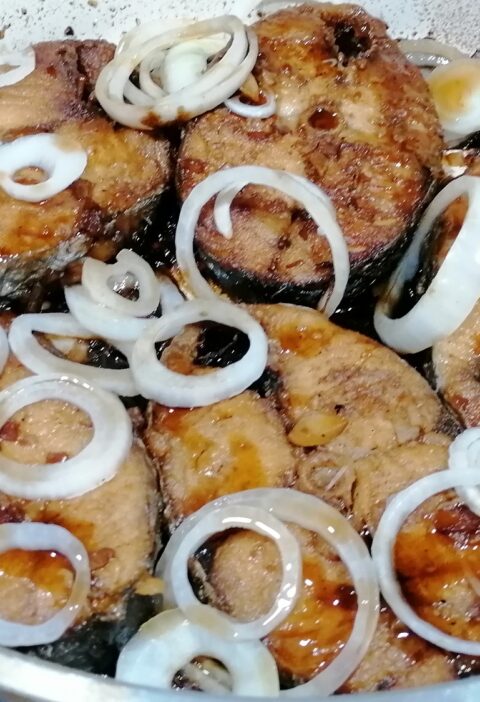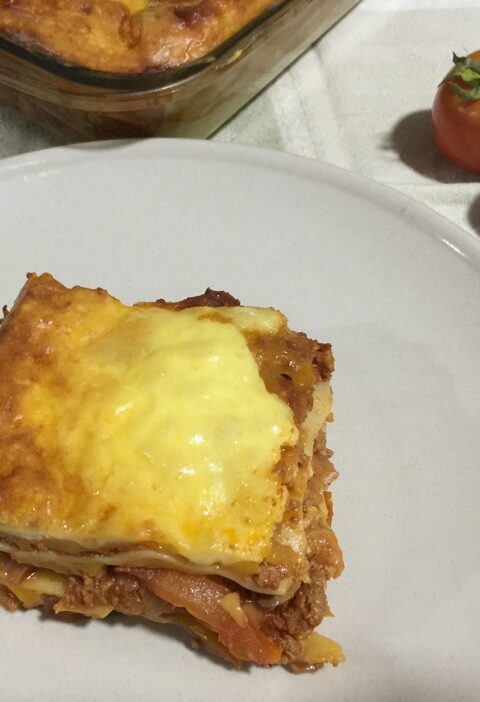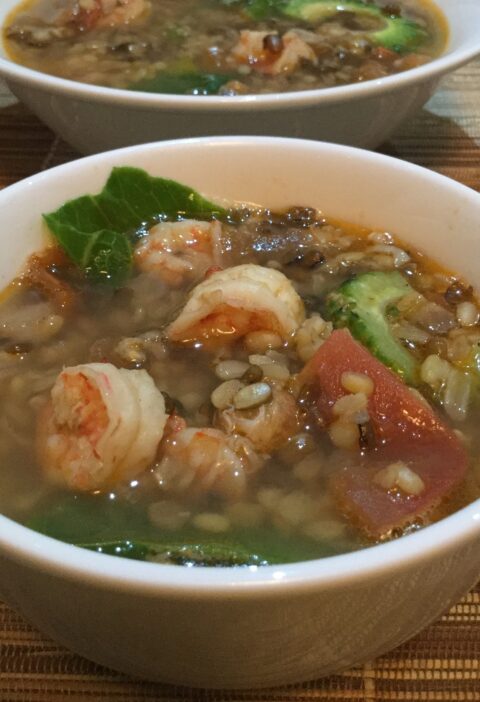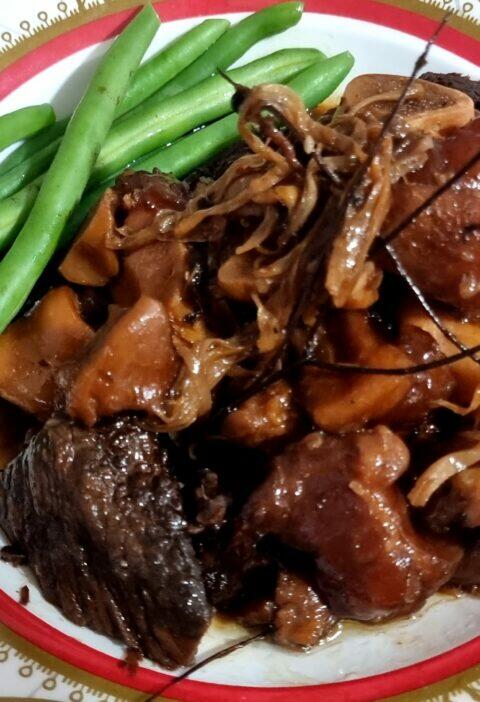What is pancit guisado?
Pancit (or pansit) literally means “noodles” and guisado (gisado) means “sautéed.” Therefore, pancit guisado is sautéed noodles.
Pancit guisado is a one-pot meal that has enough carbs, protein, calcium, and other minerals from its choice of vegetables and meat.
The popular types of noodles for this any pancit recipe are bihon, sotanghon, or canton. When any of these words are added between the two terms, “pancit”and “guisado,”that is, it is to identify the type of noodles used. For example: “pancit canton guisado”.
Types of Pancit (noodles) for Pancit Gisado
Canton is egg noodles. Their color ranges from light to bright yellow, they are crunchy to the touch, and kind of attractive that you feel they can be readily eaten. Doing so should not hurt; when they are mixed with other ingredients as part of any dish, they soften to a delectable tenderness.
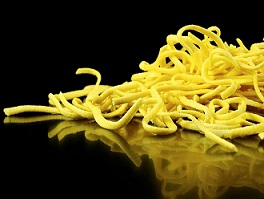
Bihon are rice noodles. They are a bit hard to the touch; they are soaked in water for about 10 minutes before mixing with a desired dish, mostly sauteed.
Sotanghon are (mung) bean noodles; they have a rather transparent look, like cellophane when raw, and they become softer when cooked. They tend to stick to each other if not handled right and/or if the quality is not good. Sotanghon, however, is usually best used with soup-like recipes, unlike its bihon and canton counterparts.

Is pancit a Filipino food/dish?
Although noodles were introduced in the Philippines by Chinese traders, the dish became Filipino through the centuries. It has become a matter of tradition. Filipinos also believe that it is imperative to cook pancit dishes during special occasions, such as birthdays – whether there is a party or not – because pansit denotes “long life.” This practice/belief must have been shared with us by the Chinese or that it is part of the whole Asian culture. Having a noodle dish is one of the everyday meals in the Philippines, and you can easily find them in most food stalls, even street-vendors, but it continues to be a must-have in many special events.
Ingredients for cooking pansit gisado
I usually start with the basics whenever I think of the lineup of ingredients for any recipe. Then I go on until I get to the generous version. Do you know that you can make this dish with as little as two vegetable ingredients – carrots and cabbage? I counted the vegetable ingredients I mentioned in this post (just out of curiosity) and that’s a generous 10!
By the way, although pancit gisado mostly uses pancit bihon, other versions would be a mix of either bihon-canton, sotanghon-canton, or sometimes sotanghon alone. So, for the sake of Feastful Fork’s original recipe, below ingredients are what’s regular for me:
- bihon noodles (or a mix of canton and bihon)
- garlic
- onion
- boneless chicken
- fresh shrimps
- carrots
- green beans
- cabbage
- cauliflower
- dried mushrooms
- patis (fish sauce)
- soy sauce
- oyster sauce
- Salt and ground black pepper
- Calamansi
- Spring onions (green onions)
How to cook pancit gisado the easy way
Cooking pancit guisado is straightforward: you sautee the meat (mostly chicken or shrimp or both), add the vegetables and seasoning, and then the noodles. Let me say this, it is easier to see it this way: it is like cooking chop suey and then adding the noodles, and presto, pansit guisado ready in no time. Easier said than done? Hmmm… the only deviation you would find in our recipe here is some timing on the ditching of the ingredients onto the pan. But then again, you will never go wrong in cooking pansit gisado as long as the noodle strands are not tangled with each other :-).
How to serve pansit gisado
This dish, or any pansit dish for that matter, is a meal by itself. However, it is customary for me to serve this with vegetable spring rolls, fried lumpiang Shanghai, or chicken dumplings.
Serve with lemon wedges on the side. It is nice to have them handy.
Season with ground black pepper for additional taste, or as necessary.
How to store left-over pancit guisado
I always make it a point to have leftovers for this dish by cooking more than what can be consumed. It is one of my evil plans! I just love it, and I find even leftovers to be mouth-watering.
I keep leftovers in an airtight container in the fridge. Though it can last for close to a week, I take them out and finish them in no time – the following couple of days at the most. Reheating them in the microwave will work. I also reheat them in a pan or wide pot over medium heat. If it turns a bit dry, I add warm water, slowly. There is no need to season with salt, as the flavor remains the same.
Cooking tips
- Another option in preparing the chicken is to pre-boil bone-in chicken in water with one bulb of young onion. Let cool a bit, debone the chicken, and stir as in the recipe instructions. This would result in less cooking time for the already-cooked meat before adding the vegetables. In addition, you would not be bothered by bone-in chicken pieces at serving time. Skinless chicken breast is also another option.
- Raw shrimps are a better option than dried shrimp.
- Add chicken liver for a different kind of touch to the taste.
- Add squid, if you wish, and/or about six pieces of squid balls as well – a practice I have seen in most recipes during the last ten years or so (I am revealing my age here).
- Celery and baby corn are a good addition to the lineup of veggies. I also noticed that bell peppers become an additional ingredient for this dish lately. You may want to try that as well.
- Replace regular cabbage with equally shredded pieces of Chinese cabbage.
- Use dark soy sauce to give a darker shade of brown to the noodles. Do you like more of the soy sauce taste in your pancit? Additional soy sauce is, of course, welcome. But make sure that you use light soy sauce or lessen the amount of salt in this recipe.
- Add lemon juice at the last step of cooking if you prefer not to worry about squeezing lemon at serving time.
Chicken nilaga and pancit gisado
Have you tried chicken nilaga?
My mom takes chicken breast and a cup of soup from chicken nilaga to use for a serving or two of this sumptuous pancit. So, often, while we were served chicken nilaga, there was already pancit guisado somewhere in the kitchen.
Enjoy this. I always do.
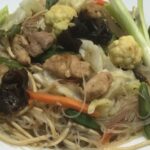
Easy Pancit Gisado
- Prep Time: 20 minutes
- Cook Time: 20 minutes
- Total Time: 40 minutes
- Yield: 6 1x
Description
Traditional rice noodles with chicken and vegetables
Ingredients
- 225g bihon noodles (soaked in water)
- 150g canton noodles
- 6 garlic cloves (minced)
- 1 medium-sized onion (sliced)
- 3/4 k boneless chicken (cut into small pieces) – chicken thigh or breast are good choices
- 1/4 k fresh shrimp
- 1 cup chicken broth
- 1 cup carrots (julienned)
- 1 cup green beans (julienned)
- 2 cups cabbage (shredded roughly)
- 1 cup cauliflower (cut into florets)
- ½ cup snow peas (optional)
- ½ cup dried mushrooms (black fungus type, soaked in water)
- ¼ cup patis (fish sauce)
- ¼ cup soy sauce
- ¼ cup oyster sauce
- cups of water (to be used sparingly)
- Salt and ground black pepper (to taste)
- Calamansi
- Spring onions (green onions) as garnishing
Instructions
- Sautee garlic and onions for about 2 minutes. Add shrimp and stir until they turn pink. Remove shrimp from the pan and keep aside.
- Sautee chicken in the same pan; stir until the juices come out.
- Add carrots and green beans and stir for a couple of minutes, then add mushrooms, cauliflower, and snow peas (if using).
- Season with salt and ground black pepper. Stir.
- Add the chicken broth followed by the bihon noodles then turn twice. Add soy sauce, stir for a bit, then add oyster sauce. Continue to stir until all the ingredients are mixed, around 5 minutes or so. Add water slowly if the noodles are still dry. The noodles here should look a bit wet as it would welcome the egg noodles (canton) on the next step.
- Add canton noodles, cabbage, snow peas, and patis. Mix again.
- Transfer onto a serving plate and serve with calamansi or lemon on the side.
- Top with thinly sliced green onions.
How to Cook Pancit Bihon and Canton – from Marcie at My Mothers’ Kitchens




